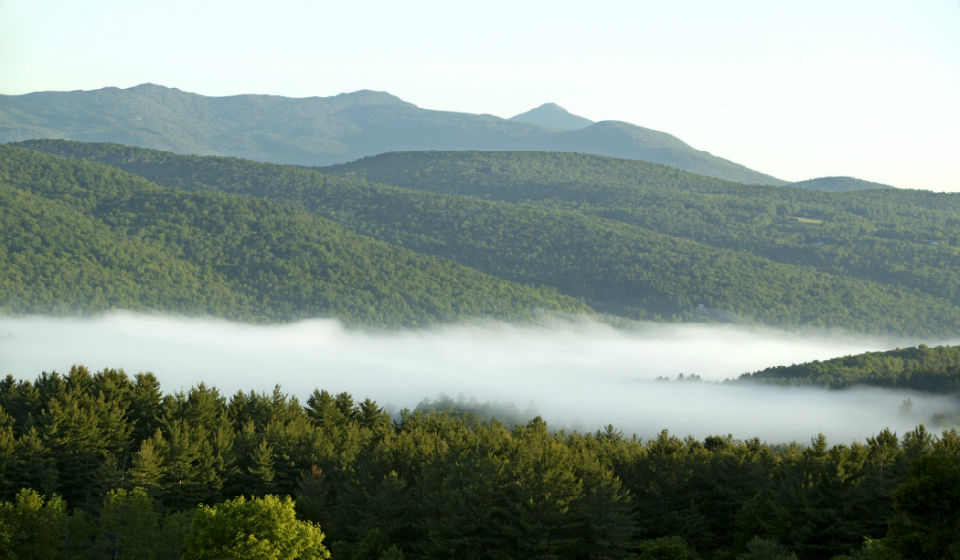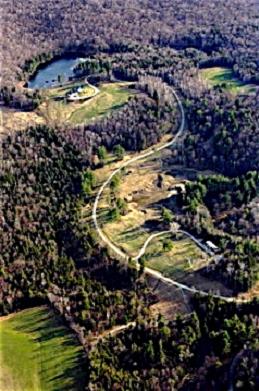Loss of Undeveloped Woodland in VT
Author:Jamey Fidel | Organization:VT Natural Resources Council | Date:January 1, 2018New Report Highlights Loss of Undeveloped Woodland in VT
A new report by the Vermont Natural Resources Council (VNRC) highlights the increasing loss of undeveloped woodland tracts in Vermont through parcelization, the breaking up of land into smaller and smaller parcels. The phenomenon of parcelization, which usually occurs through subdivision, is gaining momentum, and subsequent development is causing forest cover to decline in Vermont. According to the U.S. Forest Service, Vermont may have lost 102,000 acres of forestland from 2012 to 2017.[1]
Depending on how it occurs, parcelization and development can lead to the following impacts:
- Forest fragmentation and land conversion, which can negatively affect plant and animal species, wildlife habitat, water quality, recreational access, and the ability of forests to sequester and store carbon.
- The loss of large ownership and management of forest parcels, which can reduce their productivity and contribution to the working lands economy.
- An increase in the number of parcel owners, which may result in new housing, and infrastructure (roads, septic, utility lines, etc.), which can diminish the economic and ecological viability of forests depending on how the development occurs.
VNRC worked with researchers and state agency partners to examine parcelization trends on private land in Vermont by using Grand List (tax) data and Use Value Appraisal (Current Use) Program data from 2004 to 2016. The following are some of the key trends from the research:
- The amount of land in larger parcels is shrinking, while the amount of land in smaller parcels is increasing.
Both the amount of land in parcels 50 acres and larger, and the number of parcels 50 acres and larger are decreasing, while both acreage, and the number of parcels under 50 acres, is increasing. More specifically, the number of parcels in the 2-5 and 5-10 acre size categories increased by 10.25% and 15%, respectively.
- The number of acres in the “residential” category is increasing, while “farm” and “woodland” acreage is decreasing, with “woodland” parcel acreage decreasing the fastest.
Residential acreage increased by 162,670 acres, which is a 7% increase over the study period. The amount of “woodland” parcels, which represent undeveloped forestland (there may be a seasonal camp), decreased by 147,684 acres, or approximately 15% over the study period (a portion of this was due to land shifting to public ownership).
- Across the state, the per-acre value of land in Vermont nearly doubled during the study period, though increases varied greatly depending on location.
During the study period, the value of land statewide went from $990/acre in 2004 to $1,827/acre in 2016—an increase of 185%.
- Most dwellings are built on smaller parcels compared to larger parcels.
The number of parcels with dwellings increased by 20,737 parcels on tracts less than 50 acres in size, which is an increase of 8.8% over the study period.
- The Use Value Appraisal (UVA) Program is playing a role in protecting large woodland parcels.
The study found that parcels enrolled in the forestland category in UVA in 2004 were more likely to remain as undeveloped “woodland” in 2016 compared to woodland not enrolled in the UVA Program.
The report includes a number of recommendations to help woodland owners including the following:
- Support diversified strategies to reduce the pressures on landowners to subdivide land.
- Boost investment in land conservation and landowner incentives for conservation easements.
- Increase support to woodland landowners for succession planning to minimize the subdivision of land.
- Support working forests, including funding the Current Use Program and the administration of new forestland enrollment.
- Support outreach efforts and public policy to encourage landowners to aggregate land for management or conservation purposes.
To read the report and explore the data visit https://vtforesttrends.vnrc.org
[1] Morin et al (2017). Forests of Vermont, 2016. Resource Update FS-119. Department of Agriculture, Forest Service, Northern Research Station.



